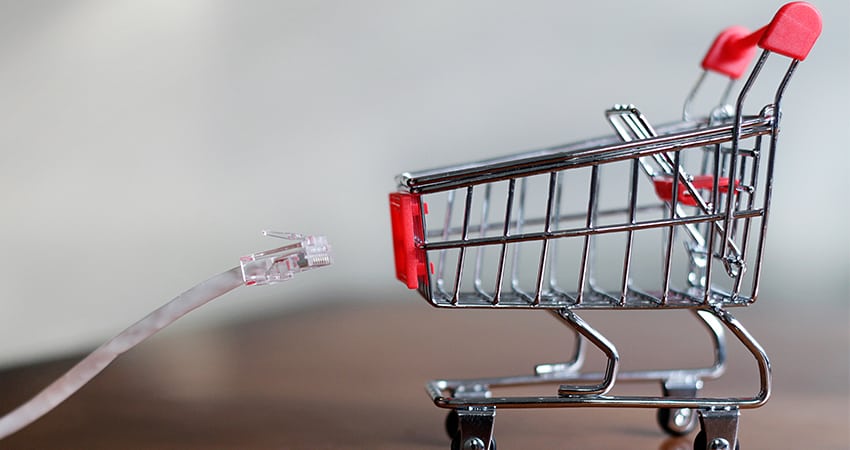Dramatic changes in retail can be seen through the lens of large and small technology companies. Retailers are facing an urgent need to improve shopping experiences and no retail technology is more exciting than autonomous checkout.
True autonomous checkout should allow the shopper to walk in, grab stuff, and leave. Companies entering this space have been trying to solve this problem using a variety of approaches. It is surprising how few of these companies have addressed the 5 hurdles of autonomous checkout required to make any idea a viable market solution: privacy, scalability, experience, flexibility, and insights (or “PSEFI” for short).
Privacy
Forget regulations for a moment. It is a company’s responsibility to do everything it can to protect their customers’ privacy. As technology advances, it is the responsibility of those who bring the advancements, not the regulators, to protect the people they serve. That said, regulations can be a helpful guide and should be seen as a minimum set of requirements a solution must satisfy. Take the example of the class action lawsuit against Walmart filed in April of this year. It involves eliminating the use of facial recognition for checkout. However this case goes, we believe biometric information, especially facial recognition, is unnecessary for autonomous checkout. Shoppers deserve a solution that serve their needs without compromising their privacy.
Scalability
Autonomous checkout cannot include closing a store to deploy technology. Using in-shelf sensors and in-shelf cameras is not realistic for chain-wide deployment. A retailer would have to either take all the product off the shelves, replace all the shelves, and restock the new shelves, OR they would have to retrofit all the existing shelving with sensors on premise. None of these options are practical for retailers as they would require stores to close entirely for at least several weeks. Not only will a retail chain not accept that as a market solution, but it would mean a chain-wide rollout that could take years to complete.
The ideal solution is a lightweight overhead camera installation that can be done as quickly as a few hours. These installs can be done overnight without disrupting customers or operations. Lower installation requirements mean less labor and faster deployment. Less hardware and less labor translate to lower costs and fewer lost sales. Moreover, just overhead cameras leads to reduced maintenance calls and operational complexity.
Experience
After having spoken with 200+ retail chains around the world, one thing is clear: The retail experience is changing, fast! The advent of ecommerce has forced retailers to rethink the in-store experience to bring back online shoppers. Pressure from ecommerce is not going to kill retail, shopping is too fun! It is, however, forcing retailers to compete by reimagining what shopping means. Two of the biggest complaints most US retailers receive from customers are (1) long wait times in line and (2) poor customer service. Eliminating the need for waiting in line allows retailers to put more resources toward enhancing the in-store customer experience.
Autonomous checkout is the first big change to retail since barcode scanners and it’s only going to get better. In the near future, shoppers will be able to walk in, without having to take their phones out, shop and leave. Many of the retailers I have spoken with already have unique experiences in mind for what they will do with their stores once they have autonomous checkout. Simply put, autonomous checkout allows retailers an opportunity to better serve their customers and the flexibility to reimagine the original checkout space to delight their shoppers.
Flexibility
Retail environments are complex and constantly changing. Sales happen on the fly, items get moved around the store by shoppers, the Internet goes down, inventory and compliance issues are dynamic, and displays and presentation must be consistent with the retailer’s brand. Autonomous checkout should allow retailers the ability to amplify their brand with their customers. The fewer hardware types used in autonomous checkout, the more flexibility a store can be with its merchandising and its brand experience.
Flash sales are one example of this flexibility. Imagine baked goods that are about to expire within the day. ‘Let’s put them on a table over there and slap a 50% off sticker on them. Go!’
If a store uses shelf sensors, all of its products need to stay on that particular shelf, making this scenario impossible. There are many examples when a store manager needs to make changes to adapt and meet customer needs on the fly.
Payment flexibility is also important. A viable solution must accept cash, credit, and other popular payment methods. I haven’t met a retailer yet who have said their stores plan on abandoning cash.
Insights
Retail analytics are valuable, but they must be seen through the lens of privacy. A lot of information can be gathered by retailers and brands, but they should have no connection to any specific individual. However, data helps retailers and brands clarify their messaging to customers and create products that customers want. What products do people pick up, but not buy? How are shoppers reacting to brand campaigns and advertisements? What is the storefront inventory at any given moment? These questions are currently only answered via ecommerce, but AI-based computer vision can level the playing for brick & mortar retailers.
Autonomous checkout will push a host of new experiences imagined by the world’s best retailers. The only way for the technology company to bring them to market, however, is to clear these 5 Hurdles.
Michael Suswal is Co-founder and COO of Standard Cognition

